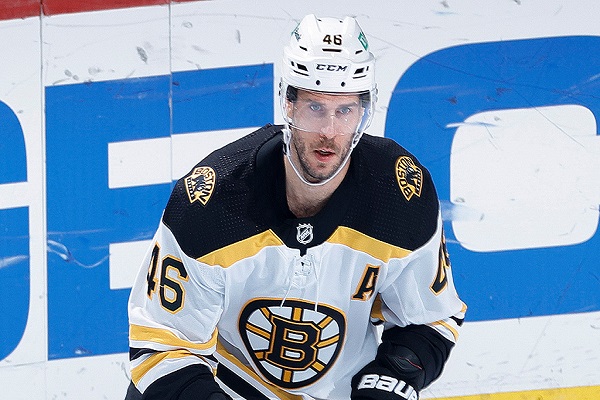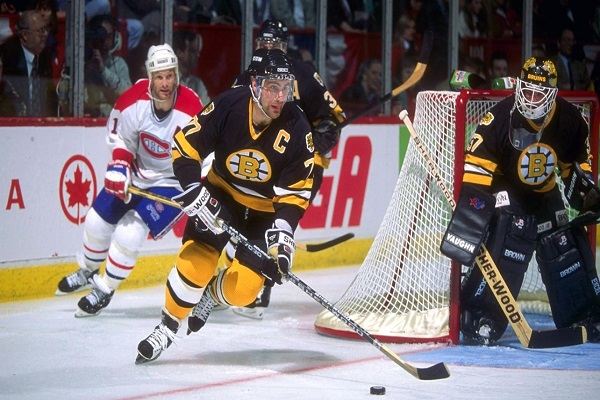
By: Ray Guarino | Follow Me On Twitter @rayguarino
As the Boston Bruins approach the April 12, 2021, NHL Trade Deadline, could they do the unimaginable? Could they be sellers? Should they be sellers? Not since 1999-2000 have the Bruins traded players away at the deadline.

On March 6, 2000, the Bruins were floundering with a 19-26-17-4 record, good for last in the Northeast Division. That day, the ground beneath the TD Garden (then called The FleetCenter) shook like a California faultline. The Bruins traded two future Hall-of-Famers in Dave Andreychuk and Ray Bourque to the Colorado Avalanche for Martin Grenier, Samuel Pahlsson, Brian Rolston, and a 2000 first-round pick.
At the time of the trade, Bourque was 40 years old and in his 20th season with the Bruins. He had requested a trade so he could go and compete for the long-alluded Stanley Cup and knew the Bruins were not going to get there in the time he had left in the NHL. In his two seasons in Colorado, Bourque led the Avalanche to the Conference Finals, and in his second season, let them to the Stanley Cup, winning in seven games against the New Jersey Devils. To top it all off, there was a Stanley Cup parade for Bourque through the streets of Boston three days later.
The Bruins currently are in a block of three teams fighting for two playoff spots. The suddenly surging Pittsburgh Penguins and the Philadelphia Flyers are the other two, with only two points separating all three teams.
Since the Bruins are sticking to their plan of letting young defensemen Jeremy Lauzon and Jakub Zboril play and develop on the main roster, this season may be the perfect opportunity to bring in some assets for pending unrestricted free-agents. Especially if they’re not bringing those players back next year.
The standings are reminiscent of the 2016-17 season as the Bruins reportedly had the opportunity to trade Loui Eriksson at the deadline to the St Louis Blues for Dmitri Jaskin and a first-round pick. Instead of that, Don Sweeney made last-minute trades to bring in Lee Stempniak and John-Michael Liles at the cost of a combined four draft picks. The Bruins missed the playoffs that year and had a net minus-five draft picks from that deadline. Eriksson ultimately signed with the Vancouver Canucks as a free agent.
Looking ahead at this year’s deadline, the Bruins have three notable unrestricted free-agents coming up. David Krejci, Sean Kuraly, and Tuukka Rask. Of the three, Rask is the least likely to get traded. Although the Bruins have two excellent goalie prospects in Daniel Vladar and Jeremy Swayman, the consensus is that they need more time to develop. A two-year extension would be ideal for the Bruins.
Looking at David Krejci, he is in the final year of a six-year contract that pays him $7.25M a year. According to CapFriendly, he has a modified No-Trade Clause in his contract where he must provide a list of at least 50% of the teams that he would accept a trade from.
So why trade Krejci? First, he’ll be 35 years old before this season is out. It’s only natural that Father Time is knocking on his door. Second, the center is a position of depth on the Bruins roster. Would anyone be surprised to see the starting four centers next season for the Bruins be Patrice Bergeron, Charlie Coyle, Jack Studnicka, and Trent Frederic?
If a team were willing to offer an early-round pick and a decent prospect for Krejci, the Bruins would be smart to take that offer.

Teams traditionally look for grinders that can play solid bottom-six minutes at the deadline. Kuraly would fit perfectly for one of those teams looking for a responsible center to play on their fourth-line. He could possibly get the Bruins a mid-round pick from a team trying to make the playoffs.
This is the perfect season to continue to play young players like Lauzon, Zboril, Anders Bjork, and the recently recalled Zach Senyshyn, so an accurate offseason evaluation can be completed by management.
With upwards of $30M in cap space available to the Bruins this offseason, this could be one of the most important offseason the Bruins have had in the last ten years. Having extra assets and draft picks will help keep the flow of young players on Entry-Level Contracts coming to Boston. With an anticipated flat cap for the next few years, productive players on ELC’s are a must for any successful team.


Leave a Reply